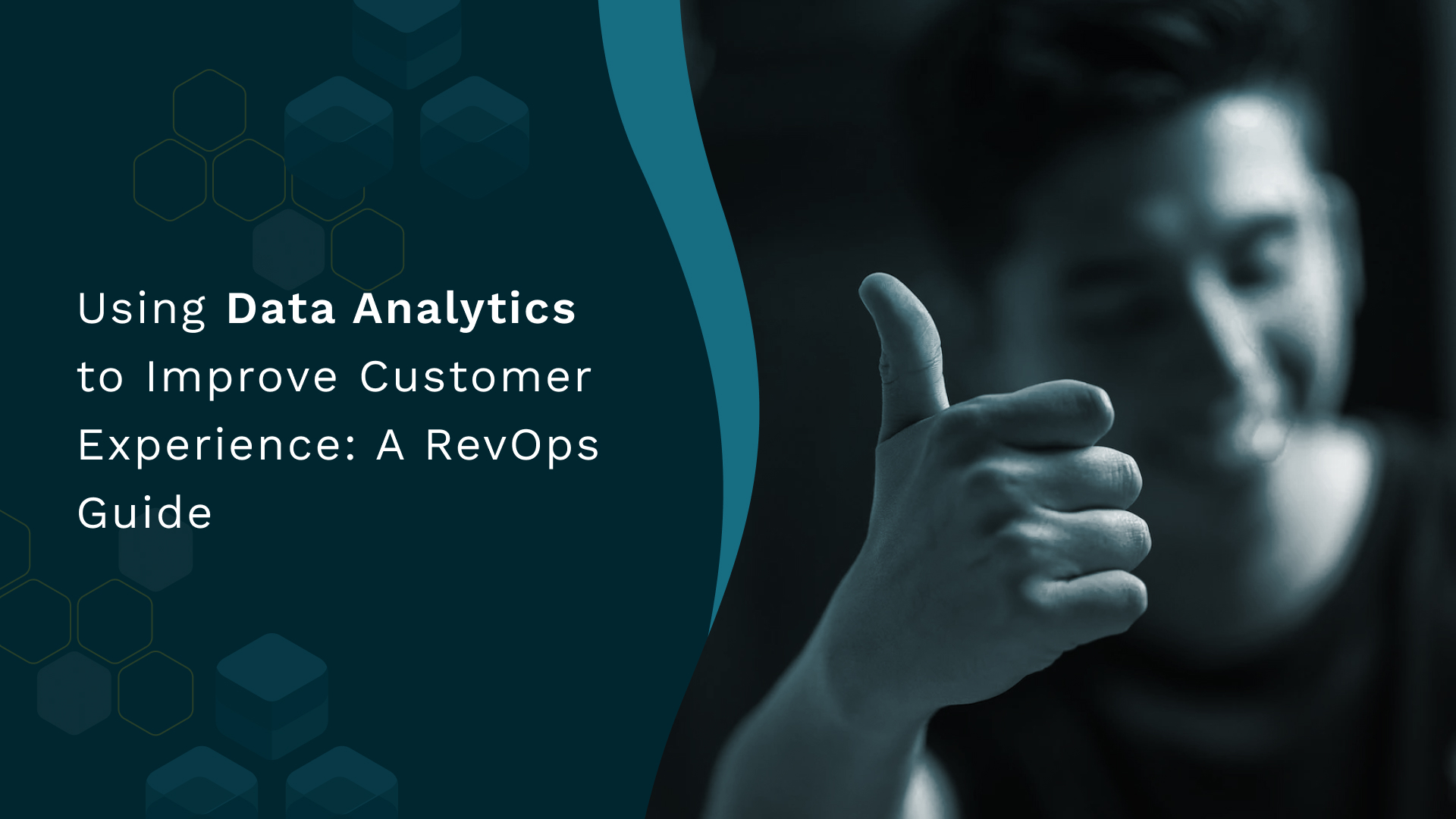Customer experience holds a significant place at the center of the RevOps universe. Companies that excel at customer experience have been seen to achieve more than 2x of revenue growth.
And for businesses, improving the customer experience has increased:
- Sales revenues by 2 to 7%
- Profitability by 1 to 2%
- Shareholder return by 7 to 10%
There’s no avoiding it. A laser-like focus on customer experience is critical for sustainable and long-term growth. It can give you the impetus to outperform competitors and craft a compelling growth story for employees and investors.
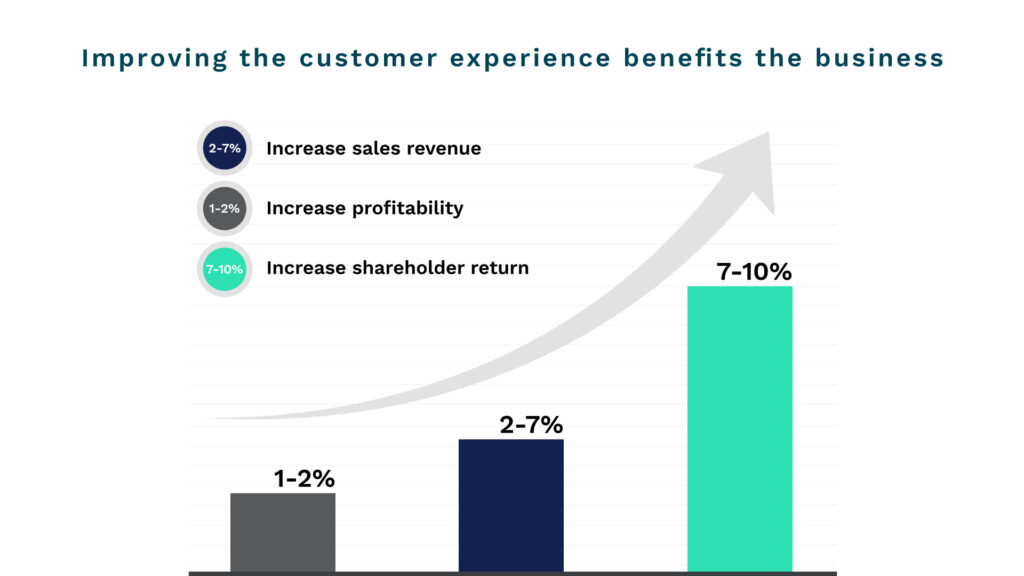
But inconsistent and unreliable data can clog the revenue wheel, stopping revenue-generating teams from responding effectively to customer needs.
So how can you use data analytics to improve customer experience? Our conversation with Mollie Bodensteiner, Global RevOps leader at Deel, throws some light on the topic.
Tune in to the full podcast episode here.
Link Between Data Analytics and Customer Experience
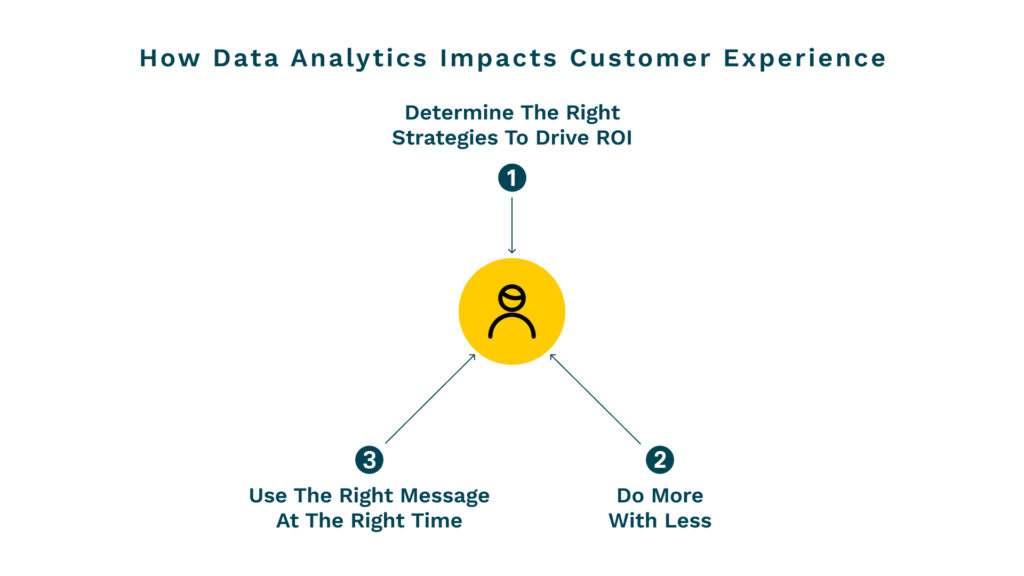
RevOps can help spot and solve the data problem using data analytics to improve customer experience.
Mainly, it smooths out context, so you can:
1. Determine the right strategies to drive ROI
Successful experience-led growth strategies increase customer satisfaction by at least 20% and offer significant financial benefits for businesses. In particular, they improve:
- Cross-sell rates by 15 to 25%
- Companies’ share of wallet by 5 to 10%
- Improve customer satisfaction and engagement by 20 to 30 dollars
With data analytics, you can action your data to refine the buying journey, determine how to generate revenue and delight customers simultaneously.
You can better understand your customers’ emotive elements through tangible information and build marketing and sales strategies to solve the pain points.
Plus, you can use data analytics to improve customer experience by mining dark data. On average, 52% of a company’s data could be dark.
Dark data is captured in your systems but not leveraged for insights. It could contain hidden customer profiles, behavior patterns, past buyer champions, and lost customer relationships.
To sum it up, strategic alignment supports data analytics to improve customer experience.
2. Do more with less
The slowdown in growth has pushed companies to chase value. And in doing so, companies are still figuring out how to “do more with less.”
How do you define what is “less” and determine the business trade-off?
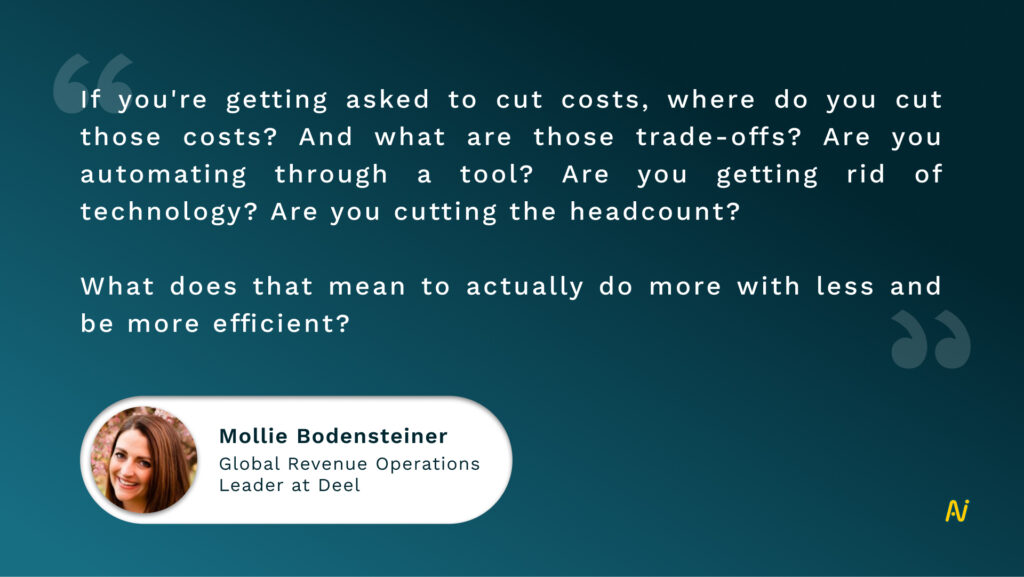
RevOps uses data analytics to improve customer experience by gathering insights into processes for reps and stakeholders. It tries to understand:
- How to make these revenue-generating workflows more effective, and
- How to help marketing, sales, and customer success be more productive than before
Data analytics gives RevOps the much-needed information to identify shortcomings, prioritize improvement of limited resources and generate more revenue.
3. Use the right message at the right time
Data analytics gives you the information to dig into the customer’s journey and deliver the right message to the right customers at the right time.
It enables you to live up to (and even surpass) customer expectations by giving them what they want without the customer asking for it.
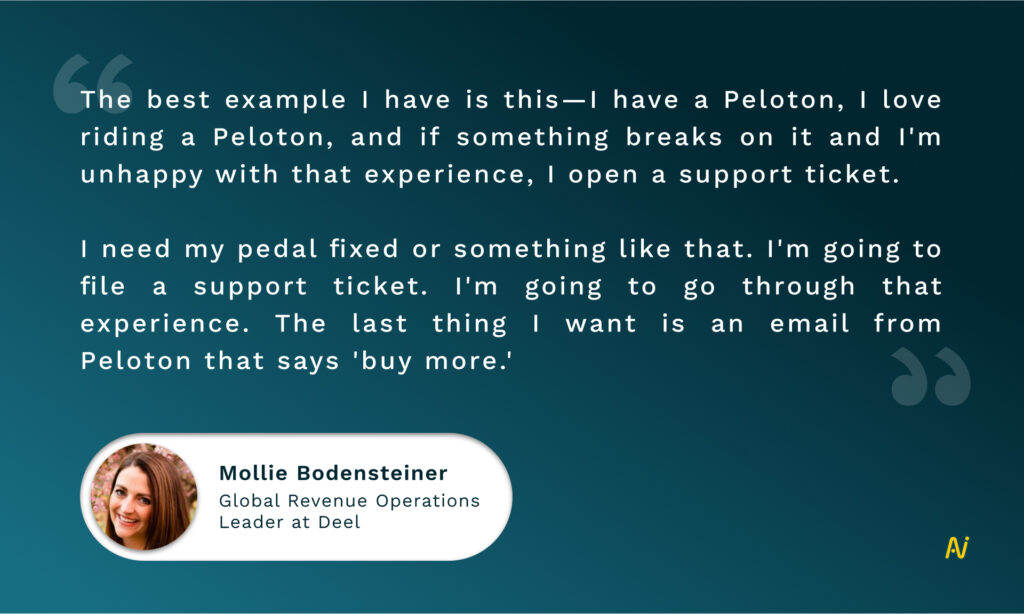
You also get to put yourself in the buyer’s shoes and manage both good and bad interactions to produce the next best action.
And while the next best action may not always generate revenue, it must meet the customer’s needs and keep them happy.
How Revops Facilitates Data Analytics to Improve Customer Experience
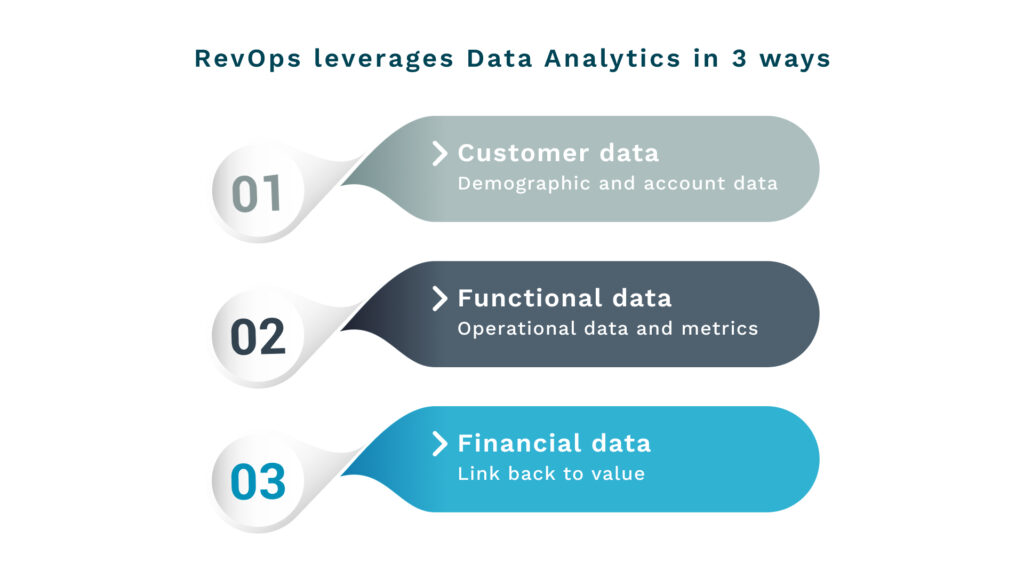
RevOps primarily aims to connect teams to drive predictable revenue and boost growth.
When it comes to data analytics, RevOps leverages it in three ways to align teams:
- Customer data (demographic and account data)
- Functional data (operational data and metrics)
- Financial data (link back to value)
Here are 6 ways RevOps facilitates data analytics to improve customer experience throughout their journey, not just at the point of sale.
1. Get complete pipeline visibility
Revenue leaders are focusing on driving value, efficiency, and compelling growth in the current business environment (which is undergoing a slowdown).
Reaching this goal requires undisputed access to clean, accurate, and reliable customer data. This data, particularly first-party data that’s reliable, provides powerful insights.
In reality, however, companies are drawing insights from stale, incorrect, or incomplete data. The result—missing out on critical revenue opportunities to create exceptional customer experience.
That’s where RevOps plays a crucial role in identifying gaps and building systems to capture customer data in a bulletproof way. It provides a 360-degree view of customer engagement that lets you better define and execute customer experience priorities.
Another benefit is you can identify the champions so you can engage with them to see the deal through. Also, you can prioritize accounts that aren’t adequately multithreaded.
RevOps uses data analytics to improve customer experience by maintaining a healthy pipeline and eliminating bottlenecks.
You can ensure data is well managed with a unified view across the business as RevOps connects your tech stacks and aligns your systems.
2. Personalize the customer journey
RevOps uses data analytics to identify patterns and trends in customer behavior to foster a customer-centric approach.
Teams leverage analytics to personalize the customer experience by periodically modifying the ICP to achieve the right audience. By constantly evaluating the ICP, you segment your audience, understand each segment’s pain points and improve personalization.
Data analytics also provide revenue operations teams with a better understanding of the following:
- Who do you sell to
- How do you sell to them
- How does the buyer make a decision
- And, how does your solution fit their needs
Not only that, but teams can also determine the role of each stakeholder in the buying committee and share personalized content (that’s relevant and valuable). You can isolate specific pain points for each stakeholder and solve them.
For example, if you’ve missed adding stakeholder contact data as they get added to the process during the deal, you may be engaging with the wrong champion entirely.
With data analytics, RevOps optimizes the sales playbook by blending relationship intelligence with buyer engagement.
It looks for patterns in buyer-seller interactions across segments, territories, and verticals so you can personalize the journey for them.
Simultaneously, you can build use cases for other buyers within the same industry or audience segment.
Other than the above, data analytics aids personalized product recommendations for customers, depending on their purchase history, buying behavior, and preferences. What’s more, you can customize marketing and customer success communication using conversational data and feedback.
3. Create frictionless customer handoffs
Data analytics promotes unified data, transforming the CRM into a shared source of truth. It also drives cross-functional alignment between revenue teams, ensuring they’re connected horizontally and not by disparate vertical silos.
Data enables RevOps, and RevOps uses data to bring teams together through shared goals and a common data language. It creates a holistic view of the entire customer lifecycle, so you can:
- Mobilize revenue growth
- Maintain transparency
- Build accountability between GTM teams.
Revops can develop seamless workflows using data analytics to improve customer experience by establishing frictionless handoffs. These handoffs or touchpoints are a part of the entire journey, right from lead to onboarding to implementation.
Since each succeeding team in the revenue process already has access to complete customer information, reps avoid asking buyers similar questions repeatedly at each stage.
Thus, customers feel that the entire experience is a continued journey.
One more way that data analytics facilitates frictionless handoffs is by sharing insights on resource allocation. You can use the information to allocate high-performing reps to high-value accounts. This, in turn, accelerates the sales cycle for high-growth buyers.
4. Tie back revenue to business goals
RevOps doesn’t drive customer experience for the sake of it. It ties the experience to your desired financial outcomes and then sets up the workflows, systems, and tech to enable success.
Since teams are aligned on business goals, they know how each win contributes to overall growth.
Simultaneously, RevOps uses data analytics to improve customer experience by identifying and tracking the most relevant growth metrics:
- Renewal rate
- Customer churn
- Customer satisfaction
- Customer lifetime value, and more.
These metrics give you and your teams tangible insights. Plus, you can coach reps using the right leading indicators. So, teams can anticipate customer needs and offer more meaningful buyer interactions.
Teams will ultimately improve, becoming more efficient and effective.
For instance, customer success uses sales data to identify upsell opportunities or renewals and give customers exactly (or at least close enough to) what they need.
RevOps, combined with data analytics, ensure customer retention by winning them over with exceptional experience repeatedly. This is particularly important if you’re a SaaS or subscription-based business looking for recurring revenue.
5. Orchestrate better use cases
Understanding your past performance informs your present and future decisions. With data analytics, RevOps gathers vital insights and context to determine:
- How a customer uses your solution
- What features or capabilities do they prefer
- How your solution solves their required use cases
For instance, one of your customers in the insurance industry is using your solution to streamline a specific workflow. Or, they may be using it for contract and deal approvals.
You can follow those insights and find out the most relevant use cases. Customers in the same industry may not be aware of all the use cases, so that you can present your learnings to these customers.
By doing so, you create a customer-forward revenue process, showcasing your solution’s usability in the real world. As a result, data analytics enables value across the customer lifecycle, even after buyers have come on board.

RevOps also digs insights from the below data to identify common issues and problems:
- Customer feedback
- Customer engagement
- Customer interactions
- Customer purchase behavior
It gives you the means to leverage these insights and improve your solution. You can effectively use data to set up more customers for success with your solution.
Thus, RevOps leverages data analytics to improve customer experience with contextual data.
6. Uphold data governance and compliance
Today, customers connect with businesses through multiple channels, sometimes using ten or more channels. These include:
- Websites
- Emails
- Social media
- Mobile apps
- In-store systems, and more.
Customers are more digitally-savvy and, therefore, are open to using these many touchpoints. But throughout the buying journey, they may also be at risk of having their data used for the wrong purposes.
Data should ideally be used for marketing only after user consent is available and you’ve clearly listed data practices in your privacy policy.

RevOps uses data analytics to offer an omnichannel experience without risking data privacy. It makes sure that the systems follow compliance regulations such as GDPR and CCPA, among others.
It also uses data-compliant technology, following data security and protection laws to avoid customers sharing more information than is necessary. This also discourages privacy vulnerabilities.
For all the data already stored in your systems, RevOps and data analytics work together to see to it that the tools are secure from data attacks. It ensures that data is used ethically.
Customers trust you with their data if you have data-compliant systems and processes in place. Ultimately, trust improves loyalty.
Overall, RevOps facilitates exceptional customer experience using everything data analytics has to offer.
But, Revops Does Face Its Challenges with Data
For starters, clean data is essential for the smooth functioning of RevOps.
When data is disparate, disconnected or siloed, revenue teams don’t have a single source of truth that distributes reliable information.
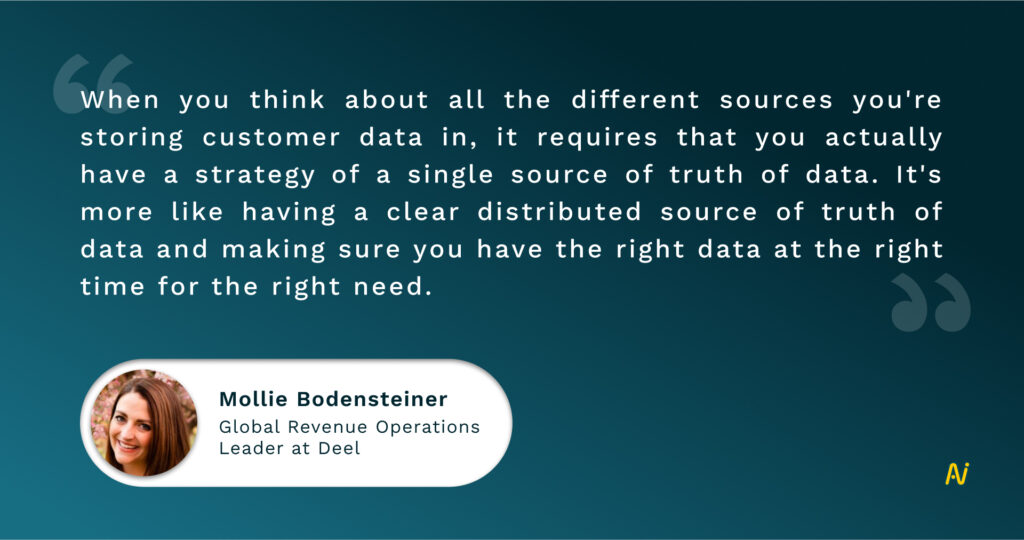
Moreover, data is fluid. That is, it’s constantly changing. New data enters the system daily, or old data is edited. Ensuring you have the data you need for decision-making and engaging customers is an ongoing challenge.
The current setup may rely on visualization and BI for insights. However, visualization alone isn’t enough unless these dashboards drive actionable strategies.
Instead, you may end up getting lost in the data, distracted by charts and graphs.
If that happens, the opportunities to build customer trust and empathy are lost. And if customers don’t trust you or feel you understand them, they will walk away.
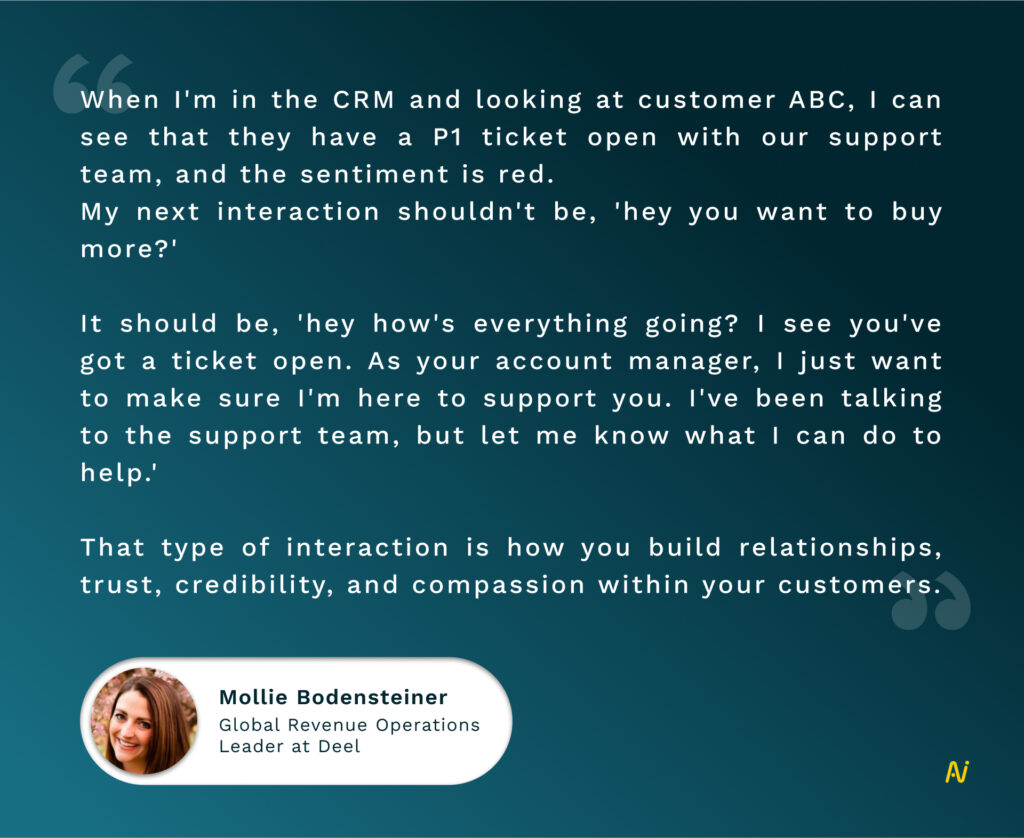
What makes it worse is not having a data governance framework, a good data strategy, and the proper data authority. None of your teams speak the same language, and data management is a messy affair.
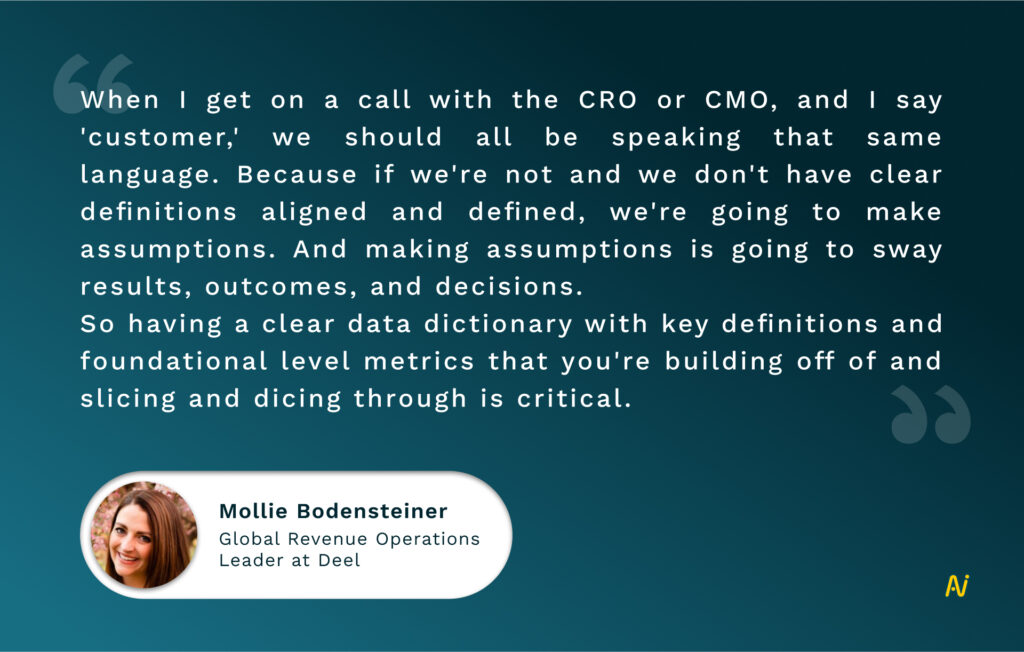
Sometimes, you may have the required metrics at your fingertips. But you may not know how to use those metrics for making critical business decisions.
Further, a lack of understanding of how even one action ties back to the entire revenue process—if it’s meaningful or not, if it drives the business forward, and how it affects the customer experience—becomes a significant gap over time.
Not all hope is lost, however. You can enrich your data to stay up-to-date, accurate, and clean.
Enrich Data Analytics to Improve Customer Experience with Nektar
Clean data is the foundation of all processes, systems, and technology. Data analytics is the output of these workflows.
To sum it up, your data foundation must be solid and reliable. And that starts at the data entry stage.
Clean data capture supports in-depth insights. This, in turn, supports data analytics for building consistent and unrivaled customer experiences.
Nektar supports reliable data analytics in the following ways:
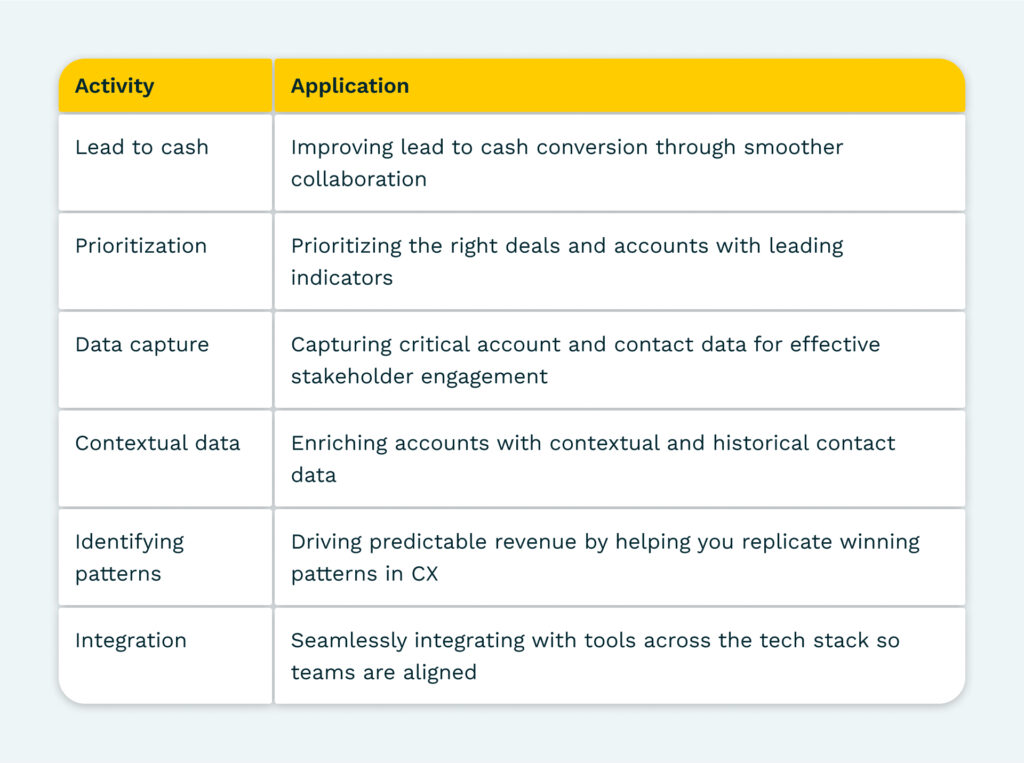
To know more about how Nektar facilitates clean data for data analytics to improve customer experience and plug revenue gaps across the buyer journey, get in touch with our team.
But why stop there? We also consolidated our ultimate guide to RevOps roadmap ebook after speaking to 150+ revenue leaders. In this free guide, you’ll find templates, checklists and plans on how to build your very own RevOps roadmap!
